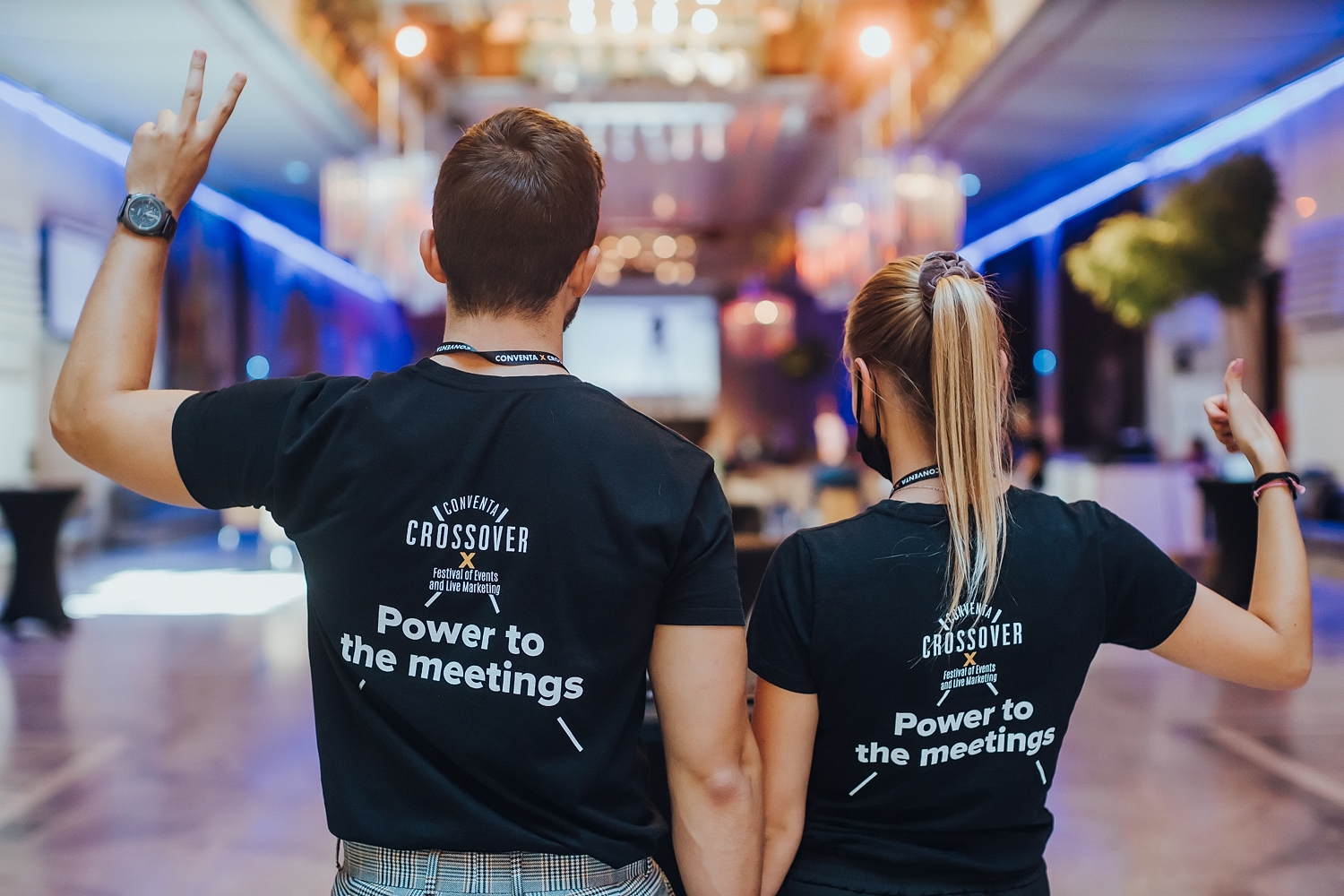
HOW WE ORGANISED OUR FIRST HYBRID EVENT, SURVIVED AND BECAME ONE THE FIRST SLOVENIAN DCO AGENCIES (Digital Conference Organiser)

Six F-16 fighter jets flew across Slovenian skies on 1 June 2020. A loud and proud proclamation by the Slovenian government – the COVID-19 pandemic was officially over. Or so we thought. Numerous articles about how we successfully suppressed the spread of the virus flooded our media space. Optimism spread among meeting planners as well. By the middle of June, the epidemiological situation was seemingly cured. In our minds, there was a 99% certainty that we would carry out the Conventa Crossover conference live at the end of August.
It was when August came that we realised how wrong we were. The situation kept getting worse each day and we had to change our strategy completely. When one after the other, speakers from countries on Slovenia’s red list started to cancel their participation, we had no other choice but to go hybrid. I felt sorry for each and every person, who had to cancel their attendance. Just like that, Conventa Crossover, known as the festival of events and live marketing became a hybrid conference. The further we researched, the more we realised that this hybrid concept might not be a bad thing. It combines the best of both worlds – brings attendees to a physical venue and invites everyone else to join online.
My younger colleagues quickly employed standard millennial ways of dealing with new situations – finding the best solution on Google and YouTube. They searched in vain and quickly gave up on the expertise of their most cherished reference tool. An endless array of articles brought little to none value – as if they were written by robots without any practical experience. From a sea of videos theorizing the use of different video conference platforms, there was not one practical guide explaining how to organise a hybrid event. Just self-promotion videos by different software providers trying to sell their products.
We scrapped the idea of trying to find a solution online and took on the project like every other in the past – through design thinking and meeting design we broke down the project into pieces and built a new event prototype. Right off the bat, we knew that connecting two different audiences (live and online) would be a big challenge, as we would have to cater to the needs of both.

Organising a hybrid version of the Conventa Crossover conference gave us an incredible amount of practical experience and knowledge that we are now ready to share with you. It was actually one of the first hybrid events in the region. If you are preparing to host a hybrid event or the thought of organising one is disturbing your sleep, this article is for you.
A hybrid event ecosystem consists of:
1. MEETING design
We could not have carried out the event without a good creative foundation built through design thinking tools and techniques. The needs and expectations of the attendees were constantly in our minds. In the end, we produced two event prototypes and plenty of ideas for future events along the way.
2. CONTENT management
When preparing the event, 80% of our energy went into generating content for all communication channels. Events are incredible communication boosters and having an experienced copywriter in-house was a big advantage.
3. COMMUNITY building
Having different tools for activating participants at your disposal is another important part of a successful event. Building a strong community around the Crossover project started with a well-arranged database of contacts. As the new pandemic reality shifted focus to regional markets, the database needed to be updated in order to become the backbone for direct marketing.
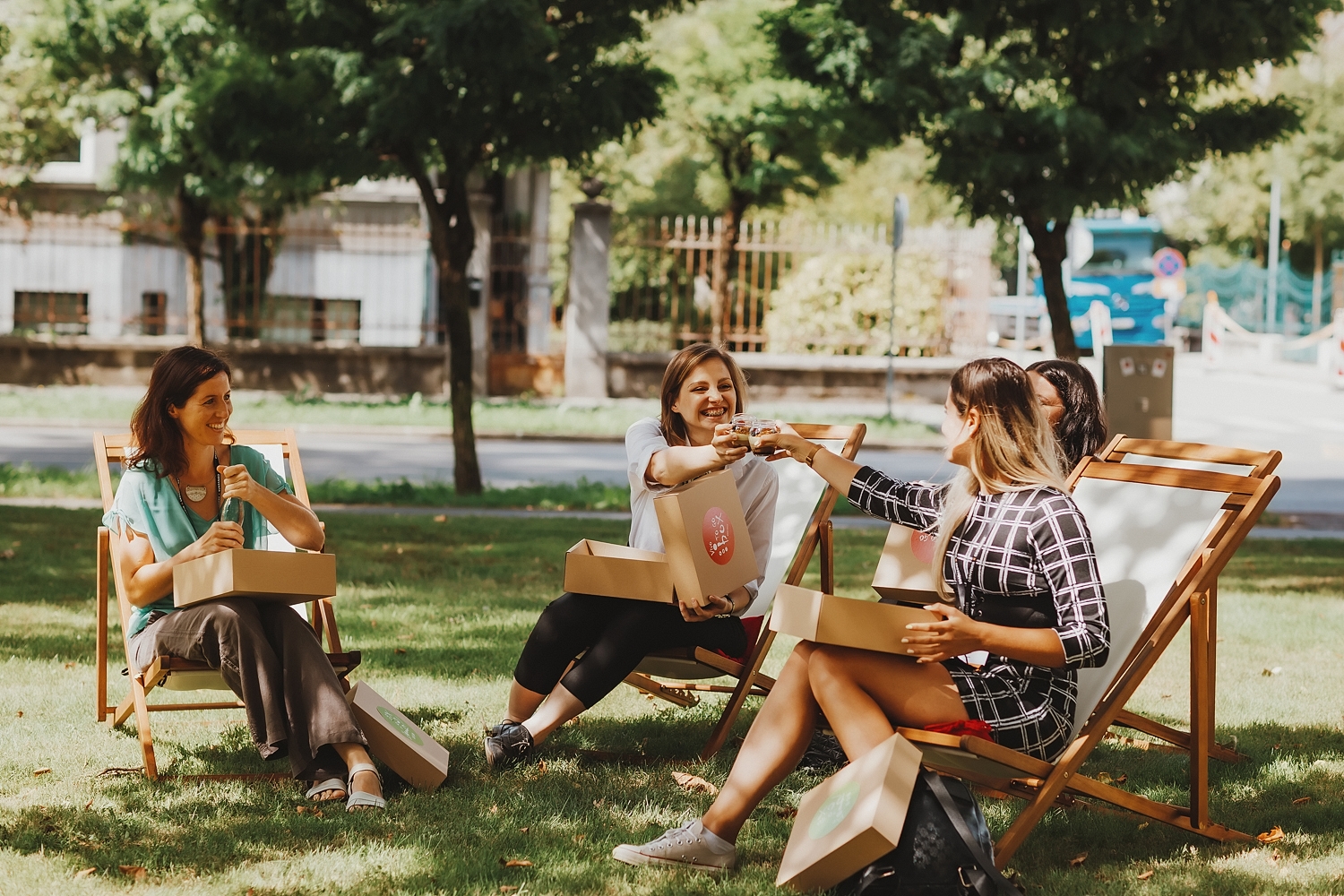
4. SOCIAL MEDIA management
A big chunk of our marketing moved to social media. We coordinated a specific plan for optimising our presence on different channels, developed a unified visual image, and determined a weekly activation schedule. LinkedIn proved to be the channel with the highest conversion and lowest investment – we’ll go into the intricacies of individual social media platforms in a separate article.
5. SPEAKERS coaching
A lot of speakers weren’t able to come to Ljubljana. We, therefore, had to make sure that they were prepared and ready to use all facets of our online platform in order to ensure a smooth and professional presentation. We guided them through the process of screen sharing, setting up their camera and audio, coordinated the programme and organised a rehearsal one day before the event.
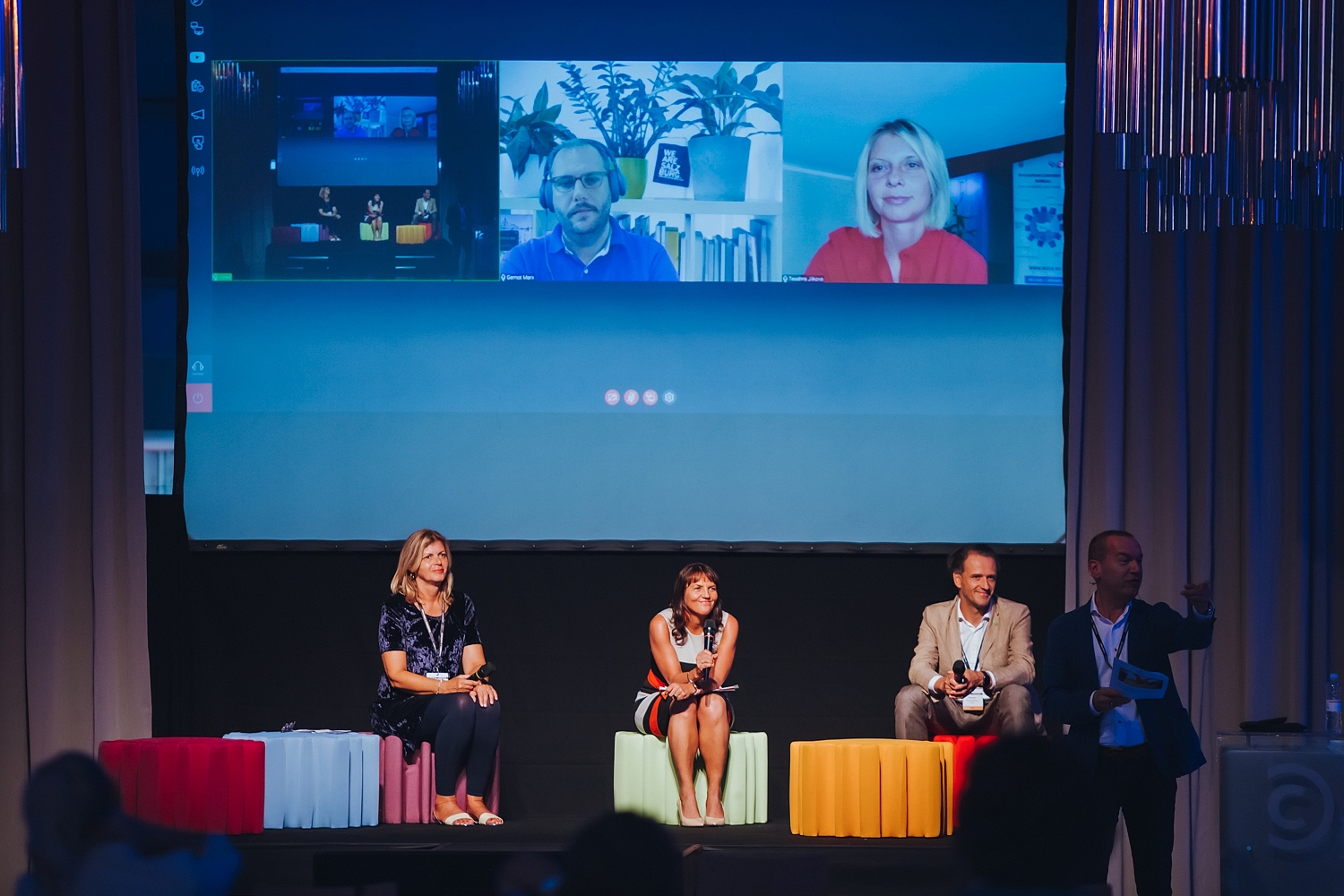
6. REGISTRATION management
Participant accreditation, entrance control and checking attendance were all carried out in accordance with the Safe and Healthy Meetings & Events standard issued by the Slovenian Convention Bureau. Hand sanitisers and face masks were available at the reception desk.
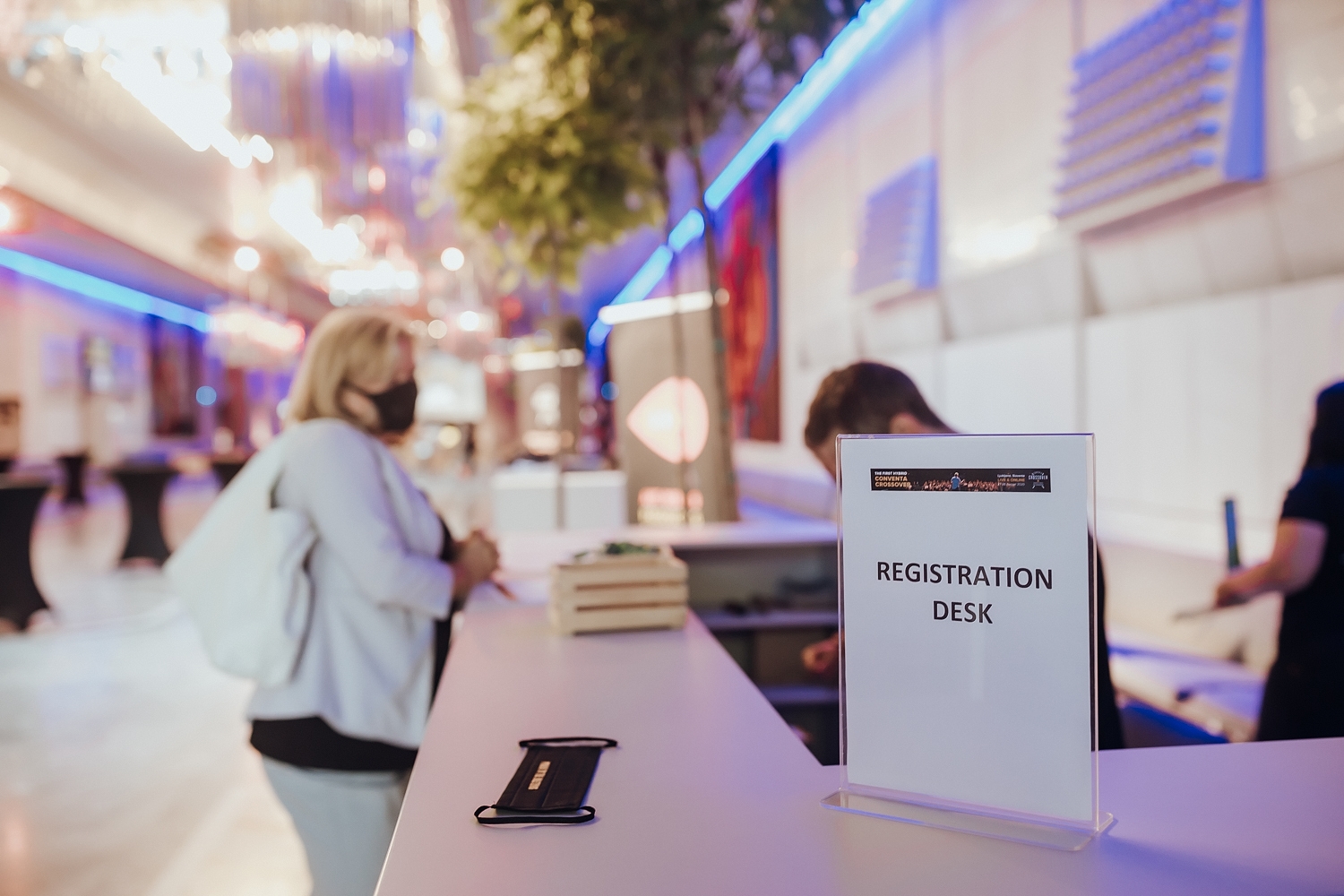
DISCLAIMER: These platforms are still not ideal, especially when it comes to matchmaking and online attendee activation during the event. However, right now, they are the best alternative for connecting two different audiences.
7. LIVE STREAMING service
When it came to live streaming, we were faced with a big decision; do we outsource and find a team that specializes in live streaming or somehow try to do it ourselves. We went with the first option, which saved us a lot of stress and stopped us from growing additional gray hair. With the help of an amazing team, the conference was professionally live-streamed to our custom-built online event platform using 3 cameras and live mixing – without any major hiccups.
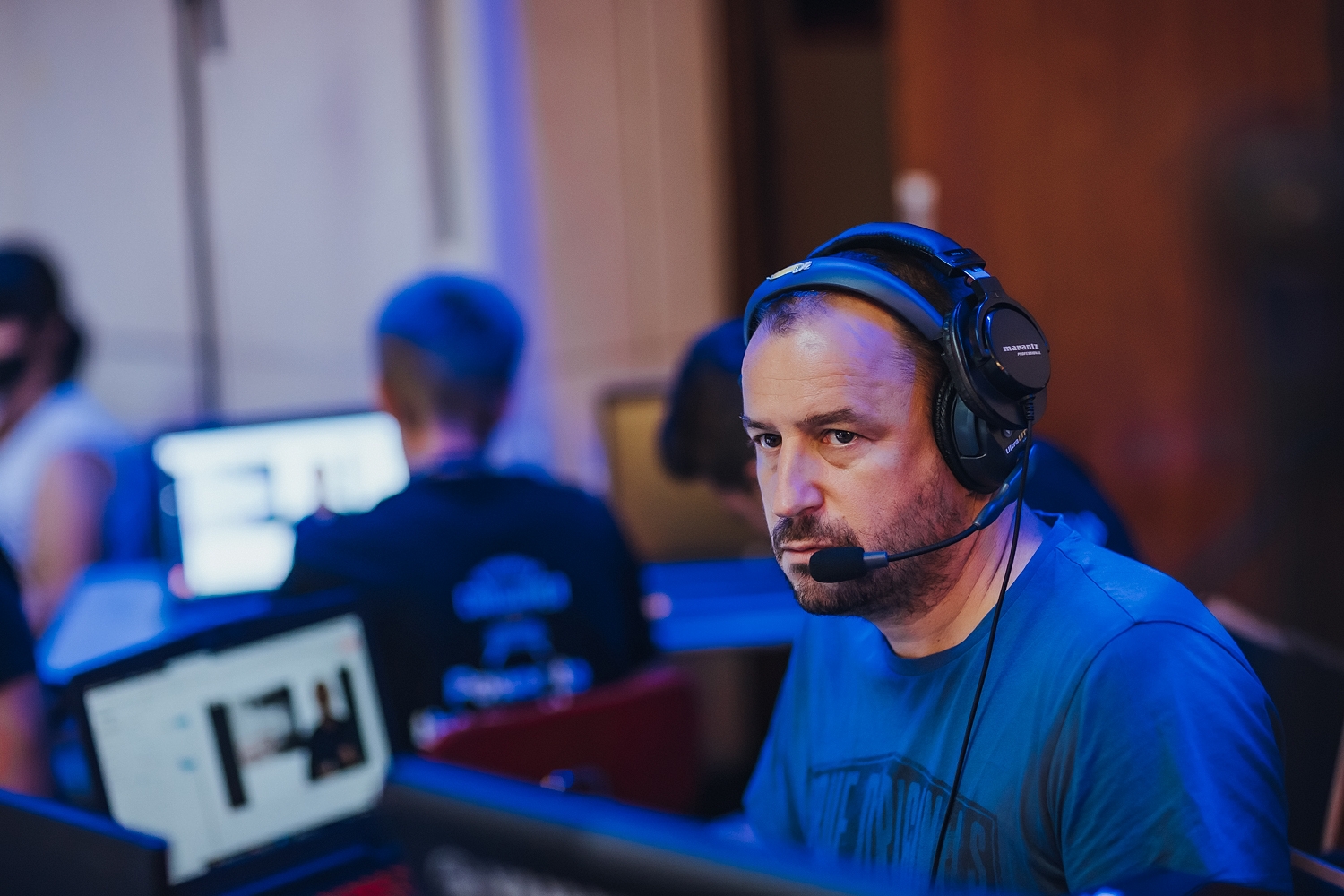
8. ON-DEMAND CONTENT production
When the live audience was having a coffee break, we wanted to engage our online attendees. For this reason, we prepared pre-recorded content that they could watch. We used our trusted Clickmeeting platform to record speakers and their presentations from home. This is a simple way to bring more added value and a sense of exclusivity to online attendees.
9. LIVE production (at the physical venue)
Without an amazing live experience, hybrid events are screwed. Taking care of professional-grade lighting, sound and picture are just the essentials. We were happy that Cankarjev dom’s technical staff made sure everything was in order. When it comes down to it, you can have the best IT support in the world and Murphy’s law could still interfere with your event, so always carry out a rehearsal and brief your technicians.

10. ONLINE engagement
Moderating quizzes, preparing surveys, or organising prize draws are forms of gamification that can make online attendance that much more engaging. From our experience, bringing an online moderator on board can be very beneficial. Zoom’s breakout rooms are a great way to split attendees into smaller groups and give them tasks related to the programme.
11. EVENT analysis
If we want our events to become strategical communication tools, we need to know how to measure reach and participant satisfaction. Integrating reports from different communication tools to calculate the final reach can prove to be a challenge. For this purpose, we developed our own KPI matrix for measuring the full effects of events.
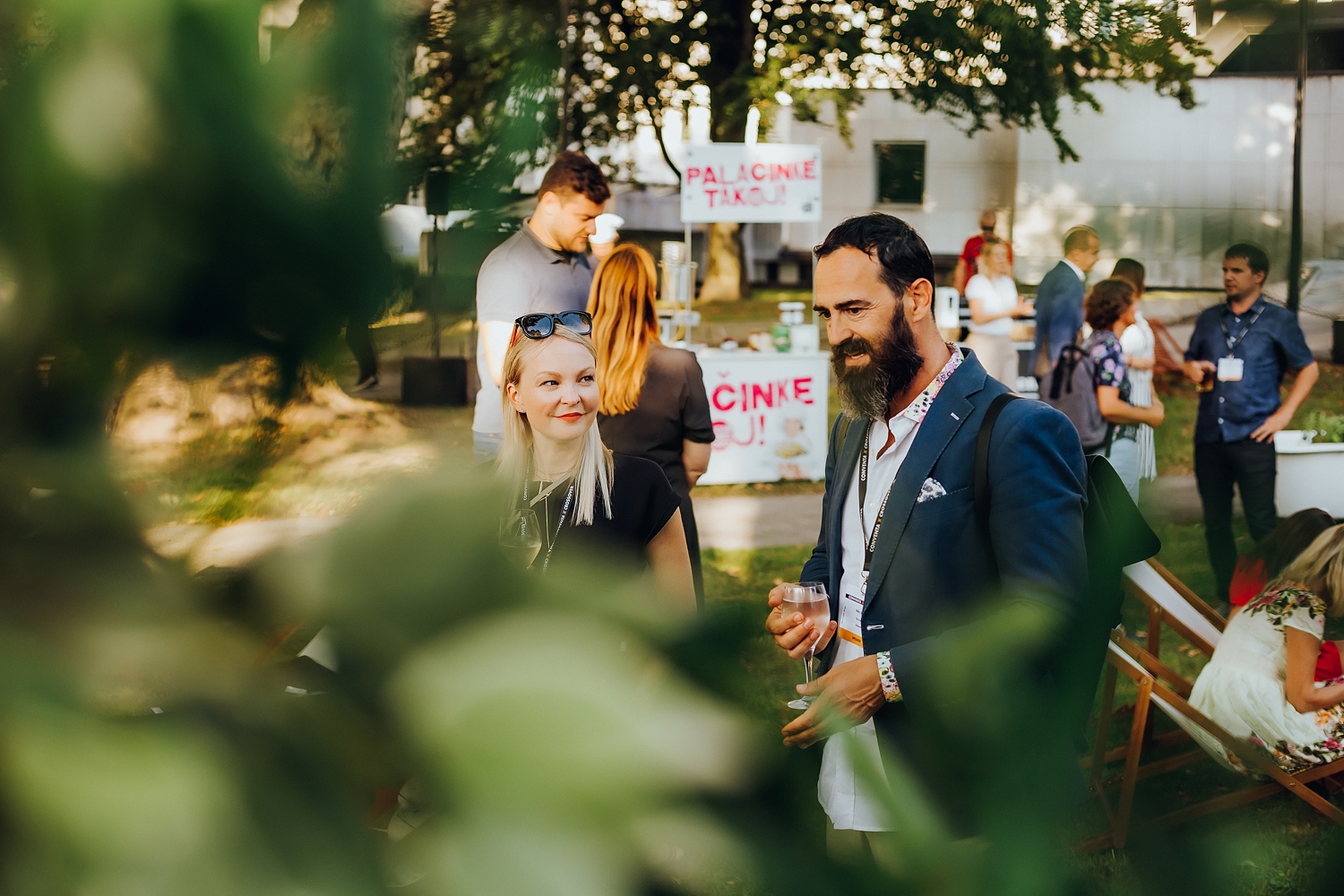
KEY OUTTAKES FROM THE EVENT
Out-take 1
Social distancing measures cut down our physical attendance by 3-times, but options for expanding the audience through hybrid formats are practically endless.
Out-take 2
A well-prepared programme with good speakers will allow you to monetize content long after the event is over.
Out-take 3
It is our responsibility to minimise the carbon footprint of events. Hybrid events are a great way to realise that.
Out-take 4
Technical solutions solve a lot of challenges, but their integration into a robust, reliable hybrid system is still work in progress.
Out-take 5
No matter the event format, knowing your target audience and adapting the meeting design to that audience is crucial.


Instead of a conclusion: THE FUTURE OF EVENTS WILL BE HYBRID FOR QUITE SOME TIME
